The Rise of Low-Power Embedded Systems
Embedded systems are used globally in wearables, IoT devices, and industrial automation. Their energy usage significantly impacts the environment and operational costs. They are designed for specific functions within larger devices, focusing on minimising energy use while maintaining performance.
This article will explore low-power embedded computers' distinctive features, core technologies, and practical applications.
What is a Low-Powered Embedded System?
A low-power embedded system is designed to operate with minimal energy consumption, optimising power usage for applications like battery-powered devices, processors, wireless sensor nodes, and energy-harvesting systems.
These systems are designed to consume low power and utilise low-power processors, efficient memory, and advanced power management circuits. Although they may not have the raw power of high-performance computers, low-power embedded systems are made to complete specific tasks efficiently, avoiding unnecessary power drain while maintaining adequate performance.
Low Power Principles for Embedded Systems
Key principles in achieving low-power designs include understanding power consumption, utilising sleep modes, implementing clock gating techniques, and applying voltage scaling strategies.
-
Power Consumption
Sleep modes and power states are crucial in reducing power consumption by allowing devices to enter low-power states when not performing tasks. Different sleep modes can be selected based on the application's needs, ensuring the system uses power efficiently while maintaining performance. Properly managing sleep modes and power states ensures optimal power usage and extends battery life.
-
Sleep Modes and Power States
Sleep modes and power states reduce power consumption by allowing devices to enter low-power states when not in use. Different sleep modes can be selected based on the application's needs to ensure efficient power usage while maintaining performance. Properly managing sleep modes and power states is needed to optimise power usage and extend battery life.
-
Clock Gating Techniques
Clock gating is a method used to decrease dynamic power consumption by turning off the clock signal to inactive circuits or modules. By making sure that only active components receive a clock signal, clock gating significantly reduces power usage. This technique is especially useful in systems with multiple modules or complex functionality, where not all components are active at the same time.
-
Voltage Scaling Strategies
Voltage scaling is a key principle in low-power design. It involves adjusting the voltage supply to meet the performance requirements of the system. Reducing the voltage supply lowers power consumption but can affect system performance. As a result, voltage scaling strategies need to carefully balance energy efficiency and performance. Techniques such as adaptive voltage scaling (AVS) and dynamic voltage scaling (DVS) are commonly used in embedded systems to optimise this trade-off.
Applications of Low-Power Embedded System
-
Consumer Electronics
Low-power embedded systems are becoming increasingly important in consumer electronics, especially wearables and smart devices. These devices benefit from low-power designs because they help to extend battery life and improve the user experience. For example, smartwatches, fitness trackers, and other wearable technologies require efficient power management.
-
Industrial Automation
In industrial automation, low-power embedded computers are used in IoT sensors and control systems. These systems monitor and control machinery and processes, where saving energy is important for keeping operational costs low and making the system more reliable. Efficient designs help constantly collect data and control things in real-time without needing much maintenance or using up a lot of energy.
-
Smart Home Systems
Smart home systems use small, efficient computers to control and monitor heating, lighting, and security. These systems help save energy and support the goals of modern smart homes.
Benefits of Low-Power Embedded Solutions
-
Extended Battery Life
One of the main advantages of low-power embedded solutions is their extended battery life. Wearables, mobile sensors, and remote monitoring systems rely on long-lasting batteries to operate efficiently over extended periods. By minimising power consumption, low-power embedded computers help ensure these devices can function for more prolonged durations between charges.
-
Cost-Effectiveness
Using low-power embedded solutions helps save money by reducing energy usage in large-scale deployments, like industrial automation and smart home systems. This reduced power consumption leads to lower energy bills and overall operational costs, helping to save money on installation and maintenance. These systems are also cost-effective and can be expanded, making them great for broad use, especially in technologies like ePaper.
-
Environmental Impact
Low-power embedded solutions reduce power consumption, leading to a positive environmental impact by lowering electronic devices' overall carbon footprint. This aligns with global ambitions to decrease greenhouse gas emissions and supports greener practices for a more sustainable future.
-
Optimisation for Compact Design
Embedded systems are optimised for low power consumption, real-time processing, and compact form factors. This makes them well-suited for devices with limited space, where efficient performance and reliability are essential. Their compact design allows easy integration into various applications, including those with stringent size constraints.
Challenges and Considerations
-
Balancing Power and Performance
Balancing power usage and computational needs is a big challenge in low-power embedded systems. Lowering power often means reducing performance, which can be a trade-off for applications needing high processing power or real-time performance. Designers must carefully optimise the system to meet performance needs while using less energy and without compromising the system’s effectiveness.
-
Design and Development Challenges
Designing low-power embedded systems involves navigating various engineering constraints and complexities. Achieving energy efficiency requires integrating power-saving technologies, optimising hardware components, and managing thermal considerations. The compact size and specific application requirements add to the design complexity, demanding careful planning and innovative solutions to meet power and performance goals.
-
Cost vs. Performance
Low-power embedded solutions often involve advanced technologies and components that can increase development and production costs. Designers must balance these costs against the performance benefits and energy savings. The goal is to achieve an optimal solution that provides value for money while maintaining efficient power usage and meeting performance standards.
In summary, low-powered embedded systems are vital for energy-efficient and cost-effective solutions across various applications. Understanding their principles, benefits, and challenges helps design systems that meet modern efficiency, performance, and sustainability demands.
Compare Embedded Computer Prices and Specifications
We've helped 6,719,000 industrial buyers make the best choice by comparing quotes from trusted Australian suppliers since 2011.
Compare Embedded Computer prices, specifications, and features now!
FAQ:
Q: How do sleep modes and power states help in reducing power consumption?
A: Sleep modes and power states allow devices to enter low-power modes when they are not performing tasks. By transitioning to these states, systems use less power, which helps extend battery life and reduce energy costs. The appropriate sleep mode or power state is chosen based on the application’s needs to ensure efficient power usage while maintaining necessary performance.
Q: What is clock gating, and how does it work?
A: Clock gating is a technique used to reduce dynamic power consumption by disabling the clock signal to inactive circuits or modules. This means that only the components that are currently active receive a clock signal, while inactive ones do not, thus saving energy. This method is particularly effective in systems with multiple modules or complex functionalities, where not all components are active simultaneously.
Q: What is voltage scaling, and why is it important?
A: Voltage scaling involves adjusting the voltage supply to match the system’s performance requirements. Lowering the voltage reduces power consumption but may impact performance. Voltage scaling is important because it helps find the right balance between energy efficiency and performance. Techniques such as adaptive voltage scaling (AVS) and dynamic voltage scaling (DVS) are used to optimise this trade-off.

(1).jpg)

-160x160-state_article-rel-cat.png)
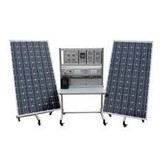

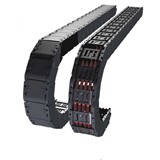
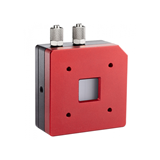
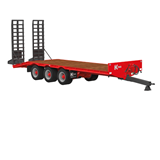

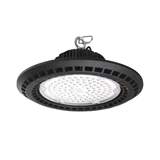


(1)-205x205.jpg)
-205x205.jpg)